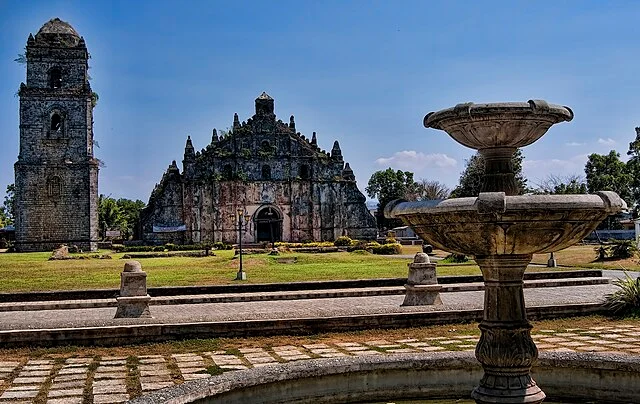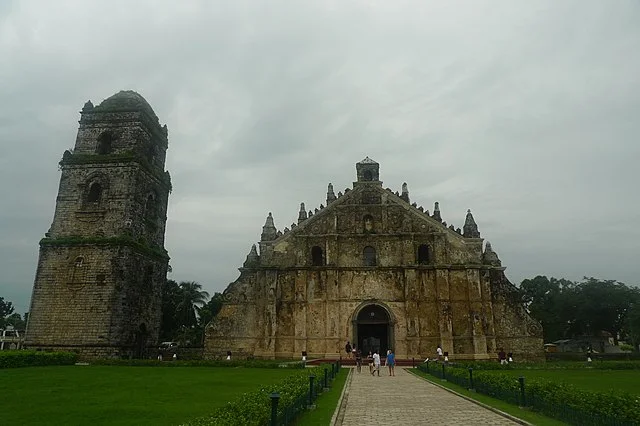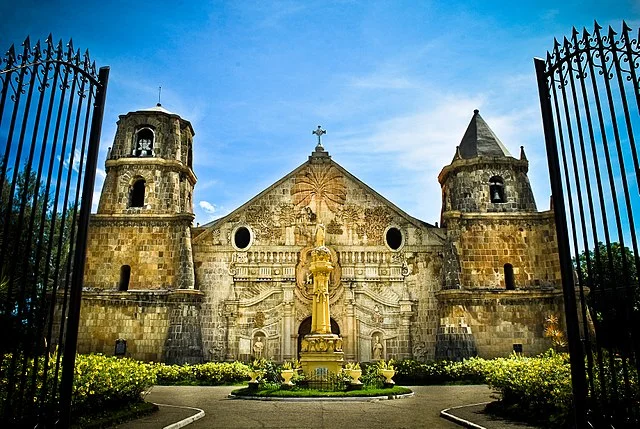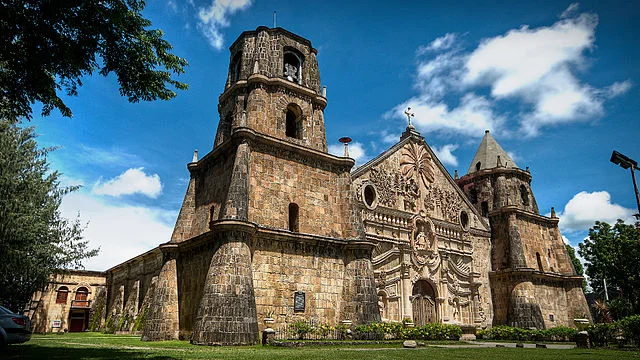The Baroque Churches of the Philippines are a group of historic churches that showcase the distinct artistic style of the Baroque period. This architectural style emerged in Europe in the 17th century and was brought to the Philippines by Spanish colonizers. These churches played a significant role in the religious and cultural life of the country. They are known for their elaborate facades, intricate details, and the fusion of European Baroque and local Filipino elements.
Get your dose of History via Email
Historical Background

The Spanish arrived in the Philippines in the early 16th century. Over the next several centuries, they sought to convert the indigenous population to Christianity. One of the most effective tools they used was the construction of churches. These churches were designed to attract people and provide them with a sense of spiritual connection. By the 17th century, Spanish missionaries were constructing churches in the Baroque style, which was characterized by grandiose decoration and dramatic forms.
The Baroque style was initially introduced in the Philippines in the early 1600s. Spanish architects, working with local builders, adapted the European design to the climate and resources of the Philippines. They integrated local materials, such as coral stone, into their designs. The churches were not only places of worship but also centers of social and cultural life in the colonial period.
Architectural Features

Baroque churches in the Philippines are known for their dramatic facades, which often include ornate sculptures, intricate carvings, and bold, sweeping lines. The facades typically feature a combination of religious symbols, such as images of saints, angels, and the Virgin Mary. The roofs are usually covered with large, curved tiles, and the church interiors are characterized by high ceilings and elaborate altars.
One of the key features of Filipino Baroque churches is their adaptation to local materials and techniques. The Spanish missionaries used coral stone and brick in the construction of churches, as these were readily available in the Philippines. This gave the churches a distinct appearance, different from their European counterparts. The combination of European and local styles resulted in a unique form of Baroque architecture, which is still evident in many of the churches today.
Notable Churches

Several churches in the Philippines are recognized for their significance in the history and culture of the country. These churches were inscribed as UNESCO World Heritage Sites in 1993 under the title “Baroque Churches of the Philippines.” The churches are located in different regions of the country, each showcasing the regional adaptation of the Baroque style.
- San Agustin Church (Manila)
Located in Intramuros, Manila, the San Agustin Church is the oldest stone church in the Philippines. It was completed in 1607 and is a prime example of the Baroque style adapted to the local context. The church’s intricate facade, with its combination of stone and wood, stands out. It features a series of beautiful frescoes and carvings inside. The church is a symbol of Spanish colonial rule and a center of Catholic worship. - Paoay Church (Ilocos Norte)
Also known as the San Agustin Church of Paoay, this church is renowned for its massive, coral stone construction and unique architectural features. Built in 1710, it is famous for its large buttresses, which support the building’s walls and help it withstand earthquakes. The church’s impressive baroque facade and its design demonstrate the blend of Spanish influence with local materials and techniques. - Santa Maria Church (Ilocos Sur)
This church, built in the 16th century, is distinguished by its elevated position on a hill, which is visible from a great distance. The church’s well-preserved Baroque facade and interior are striking examples of the style. The bell tower, made from coral stone, complements the main structure and provides an iconic feature of the church’s landscape. - Miagao Church (Iloilo)
The Church of St. Thomas of Villanova, commonly known as Miagao Church, is located in Iloilo and completed in 1797. The church’s facade features intricate relief sculptures depicting biblical scenes, including the story of St. Christopher. The structure uses locally sourced materials, like coral stone, which gives it a unique texture.
Role in Filipino Culture

These churches played a key role in shaping Filipino identity during the Spanish colonial era. They were not only places of worship but also social and cultural centers for communities. Religious festivals, baptisms, marriages, and other important events took place in these churches, making them central to everyday life.
Moreover, the Baroque style in the Philippines is a symbol of the country’s colonial past and the enduring influence of Spanish culture. Today, these churches are not only important historical monuments but also active places of worship, serving the Catholic community in the Philippines.
Conclusion
The Baroque Churches of the Philippines stand as a testament to the rich cultural and architectural heritage of the country. Through their unique blend of European and local influences, these churches provide insight into the history and identity of the Philippines during the Spanish colonial period. They continue to be vital landmarks, representing both the religious and cultural legacy of the Philippines.
Source:

